28 Feb 2024
With a newly launched Aerospace Strategy, our first Minister for Space, and the local sector blasting off in all directions from rockets to satellites to solar power, 2024 is tipped to be a big one for New Zealand in space. But can Aotearoa be truly world-leading with so few women in the space sector?
Aerospace engineer Kate Breach has had a stellar career, starting off as an engineering officer working on fighter jets, for both the Royal New Zealand Air Force and Britain’s Royal Air Force, before representing New Zealand at international space meetings on behalf of the Ministry of Foreign Affairs and Trade.
In 2020 she joined the New Zealand Space Agency. She regulated space launches from New Zealand, and worked with local space companies, universities, international space companies and space agencies like the National Aeronautics and Space Administration (NASA), to further develop Aotearoa’s space sector.
Last November she joined Sydney-based space company HEO as Senior Partnerships Manager. For now, she remains the founding President of Women in Space Aotearoa New Zealand (WISANZ), which supports women and gender minorities in the local sector.
Kate’s CV also includes working with stars of the Hollywood kind, with a stint on a movie set and studying screenwriting in Los Angeles. She would love to see a local film about space. “Not sci-fi but about right now. There are so many exciting things happening.”
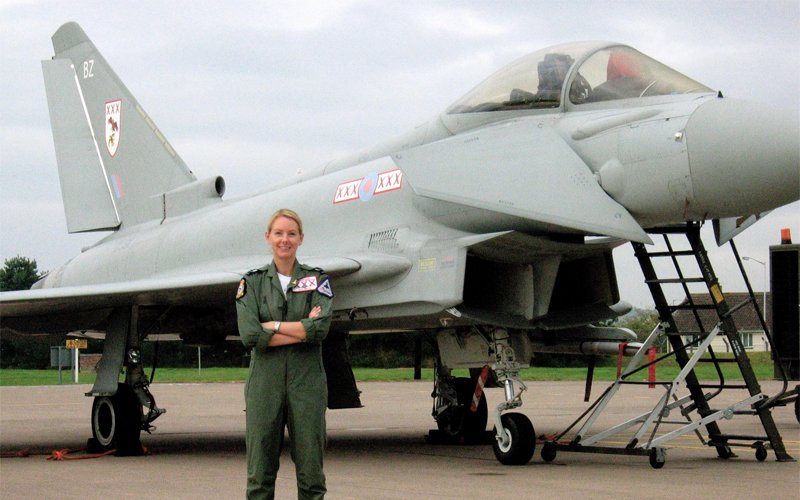
Kate was the Royal Air Force's first Junior Engineer Officer to work on the Eurofighter Typhoon aircraft. Photo: Supplied
Certainly, the trajectory of New Zealand’s idiosyncratic, fledgling space sector – unexpectedly propelled into the role of a global leader in space technology in a decade – has movie-making potential. Aotearoa is just one of 11 countries that can launch to orbit, and in 2022 it was number four on the list of nations launching the most rockets, behind the United States, China and Russia.
New Zealand’s space agency was developed in response to its commercial sector. Kate says its policy and regulation have been developed to foster innovation and enterprise, and it is seen as a shining example.
“Legacy” countries, with state-funded space programmes and more rigid regulations, are racing to adapt.
“They recognise what’s driving the next phase of this new space era [is] commercial leadership.”
With components on satellites so much cheaper nowadays, and the availability of “ride shares” on launches owned by companies such as Rocket Lab and SpaceX, space is now infinitely more affordable and accessible than it used to be.
Rocket Lab’s first test launch blasted off from its Mahia Peninsula site in 2017. Since then, New Zealand’s astronautics industry has rocketed ahead. Kate says the past two years especially have seen “a lot of exciting change”. She says globally the local space sector is “incredibly well respected” when it comes to innovation.
In 2022 Rocket Lab launched the first-ever lunar mission from New Zealand soil – the historic CAPSTONE Mission in partnership with NASA’s Artemis Program. The Kiwi-American venture has a number of projects in the pipeline. They include a contract to design and build two satellites to go into orbit around Mars for NASA in 2024.
A 2019 Deloitte report notes New Zealand’s space industry contributed $1.7 billion to the economy in 2018–19. Deputy head of New Zealand Space Agency Andrew Johnson expects the sector has developed further since then, adding: “This dynamic sector will help grow our economy.”
Rocket Lab may remain best-known, but it has been joined by a crowding field of entrepreneurial competitors. Each one, Kate says, is “leading-edge globally” within its niche. They include Dawn Aerospace, the Christchurch company whose rocket-powered Mk-II Aurora spaceplane – capable of flying multiple times a day – could pave the way for commercial payload flights. Auckland-based space-tech company Zenno Astronautics has invented a way of repositioning satellites in space using solar-powered superconducting electromagnets, rather than fuel. Meanwhile, Astrix Astronautics, also in Tāmaki Makaurau, has developed a way to deploy cost-effective and efficient solar panels.
Kate says such companies have been encouraged by the government’s release of the 2023 Aotearoa New Zealand Aerospace Strategy. A 2022 agreement with the United States enables opportunity for collaboration with NASA.
The creation of a new Minister of Space bodes well. “It recognises the importance and value of space – not just for economic development but also for developing solutions in space to global issues, like climate change.”
Kate would like to see the government help improve the space sector’s diversity, particularly in terms of women. Around 20 percent of the global space workforce are women, but that is across all roles. “Only around 10 percent of technical roles are women,” Kate says.
There is no specific data on New Zealand, but anecdotally it is similar. “There’s been no improvement for a very long time. The sector is not set up, or armed with the right tools, to enable women to be as successful as their male peers, and to encourage them to stay.”
Kate and Rocket Lab engineer Lara Collier attended the 2023 United Nations Space4Women Expert Meeting in Montréal, Canada. It resulted in the drafting of guidelines that aim to help space organisations and companies improve the gender diversity, equity and inclusion of their workforces. The high-level guidance will be released by the United Nations Office for Outer Space Affairs in June.
It recognises the importance and value of space – not just for economic development but also for developing solutions in space to global issues, like climate change.
WISANZ plans to develop a New Zealand-specific document expanding on the United Nations' guidance to share with local space companies, universities and the New Zealand Space Agency. It is urging Minister for Space Judith Collins to consider funding this.
Why is it important? “The government is banking on GDP from the space sector. But if you’re only mostly drawing talent from 50 percent of the population, New Zealand is never going to meet its true potential as a space nation. Every company knows they have to make that talent pool wider.” Kate adds that studies show a diverse workforce is an innovative workforce.
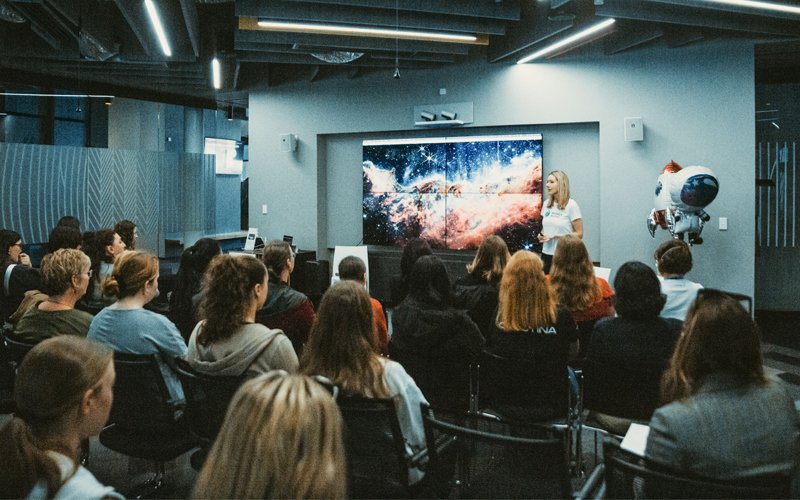
Kate Breach facilitating Women in Space Aotearoa New Zealand’s 2022 Pathways to Space event in Christchurch. Photo: Women in Space Aotearoa New Zealand/JIX
“As a child dreaming of space, I never believed I’d be here”
Rocket Lab’s Julia Rothman always wanted to work in space. She studied physics and maths at Te Herenga Waka—Victoria University of Wellington but, at the time, the only option was to go overseas. After an OE she “eventually found the US Air Force, the military and space” and completed a master’s degree in systems engineering. Julia went on to spend nearly two decades designing and launching space systems for the United States Government, returning to Aotearoa in 2018.
As Director of Rocket Lab’s Launch Complex 1 on the Mahia Peninsula, the world’s first commercial launch site, Julia ensures the launch site is ready for all launch operations. She says she feels “very fortunate to be the Director of LC-1, and very proud to be a woman engineer at Rocket Lab”.
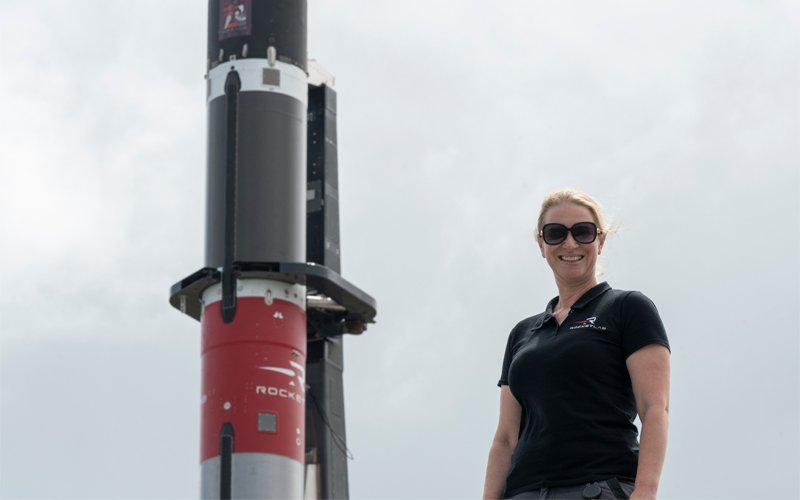
Julia Rothman. Photo: Phil Yeo
The industry has grown exponentially. There are so many more companies, roles and opportunities, to grow a flourishing, competitive career in New Zealand.
Rocket Lab is focused on ensuring the 18-metre Electron rocket is “the world’s best small-launch vehicle”. Small launch vehicles help with a huge range of space activities, from launching small satellites that carry out environmental monitoring to emergency response to geographic information systems (GIS).
Julia says it is a small team and the work is very hands on. “You’re as close to the rocket as you can be.”
For Julia, her job is a dream come true.
“As a child dreaming of space, I never believed I’d be here, part of it.”
She says there are countless ways into the space industry today.
“The industry has grown exponentially. There are so many more companies, roles and opportunities, to grow a flourishing, competitive career in New Zealand.”
Broadening New Zealand’s market
Betina Pavri is Senior Principal Engineer at the Paihau-Robinson Research Institute, part of Te Herenga Waka—Victoria University of Wellington. She also has an out-of-this-world background in robotic space exploration with NASA Jet Propulsion Laboratory (JPL) that includes designing, testing and operating Mars Rovers.
In 2022 she and her partner Randy Pollock (the Institute’s Chief Engineer for Space) moved to Aotearoa to help Paihau-Robinson make its first foray into space.
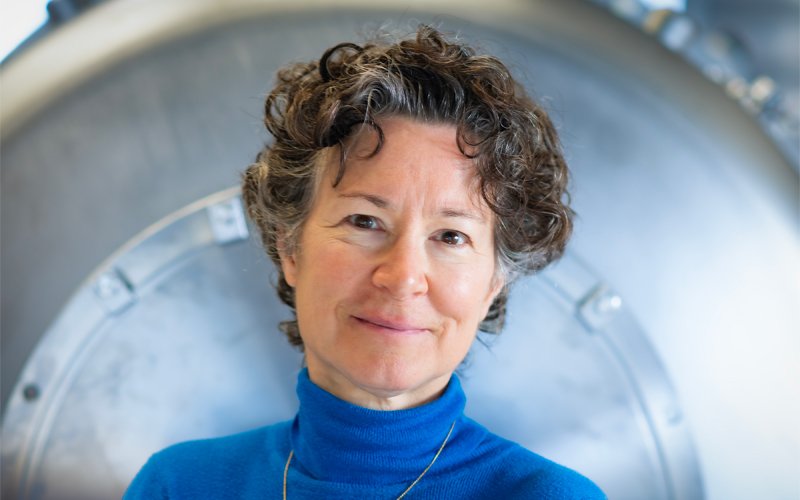
Betina Pavri. Image: Robert Cross, Te Herenga Waka—Victoria University of Wellington
Betina says the Institute is recognised internationally for its work with high-temperature superconducting magnets, while she and Randy are providing their experience of sending things into space and testing for that environment.
Superconducting materials conduct electrical current with no resistance, meaning they can create very powerful electro-magnets when a current is passed through them. Paihau-Robinson is looking to test a brand-new superconducting magnet and its wireless inductive power supply (called a flux pump) to make “applied-field magneto plasma dynamic thrusters” – or plasma rockets – more efficient, and to ensure they can survive in space.
“If we can successfully demonstrate this technology… it will open a worldwide market for New Zealand companies to capitalise on.”
“I felt like I’d hit the jackpot”
Just three years into her career, Dawn Aerospace Flight Operations Software Engineer Juliet McLachlan is part of a team who successfully completed the company’s first rocket-powered flight in 2023.
Juliet joined the Christchurch-based space transportation company after graduating from the University of Canterbury with an engineering degree. She’d majored in mechatronics, with the intent of going into the space industry. “I felt like I’d hit the jackpot.”
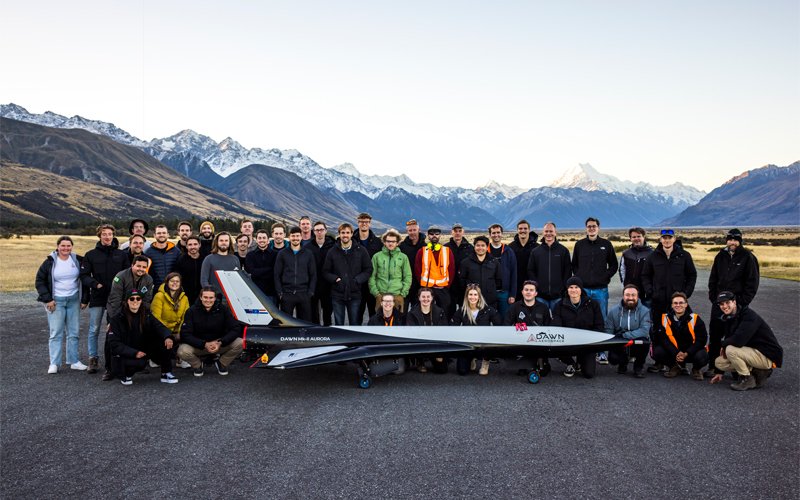
Team photo with the Mk-II Aurora on the tarmac at Glentanner Aerodrome after the first rocket-powered flight. Juliet McLachlan front centre. Photo: Dawn Aerospace
The born-and-bred Cantabrian – who also happens to be an Oceania Karate champion – had assumed she’d have to work overseas, or in Auckland. But Christchurch now has a thriving aerospace industry along with an aerospace centre, Tāwhaki, at Kaitorete, south of Christchurch.
Juliet, the company’s first woman engineer, says while New Zealand’s space sector is “quite receptive and welcoming” to graduates, WISANZ has been “epic” for networking and mentoring opportunities. As a young woman in a male-dominated industry, she needed to learn to back herself and admits it can be intimidating for those less confident. “We need to build an environment where there’s enough of us around to feel it’s normal, and more welcoming.”
This article was first published in the March 2024 issue of EG magazine.

